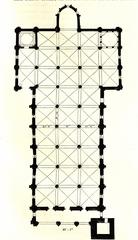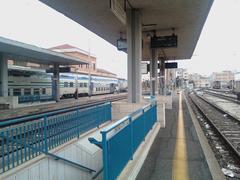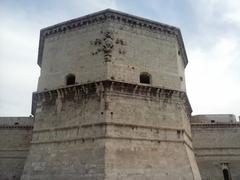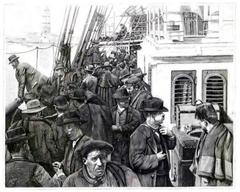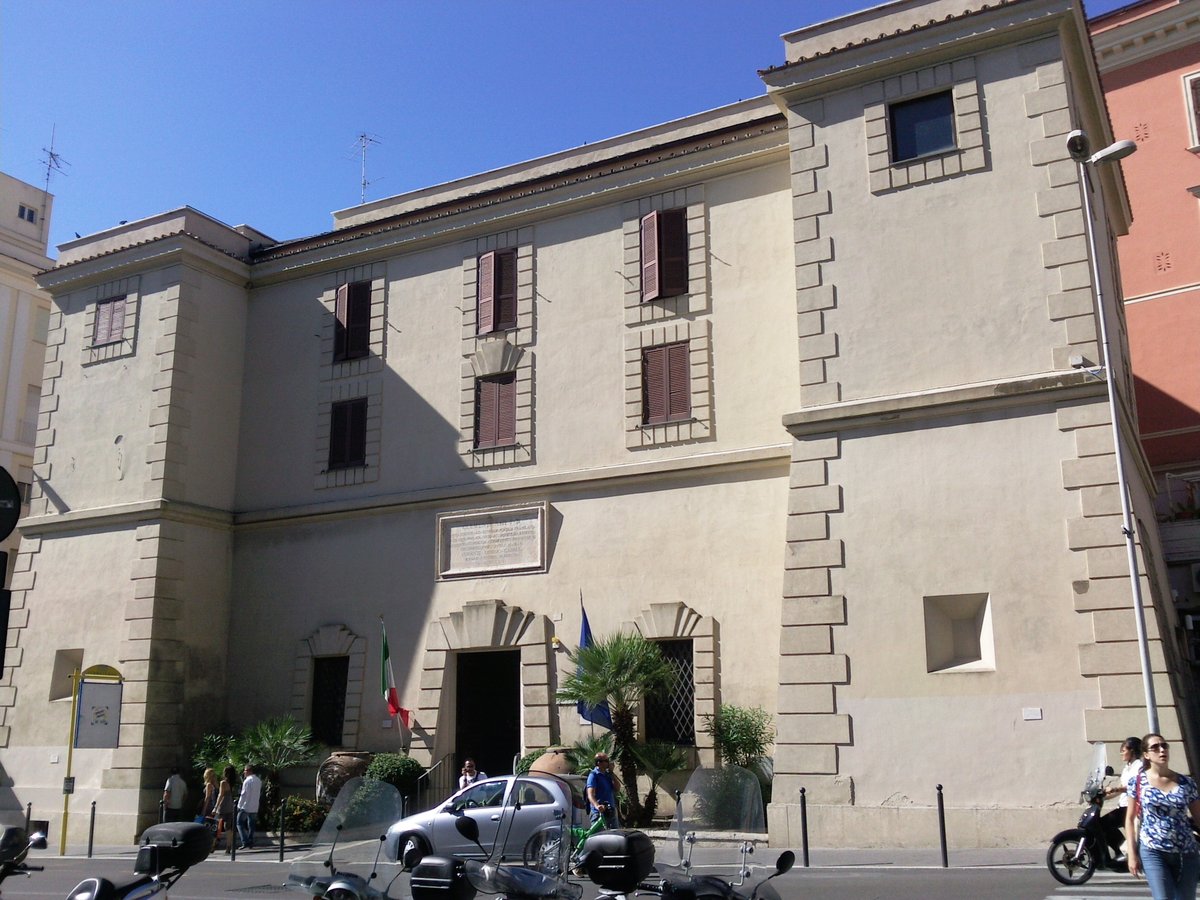
Visiting Hours and Tickets for Museo Archeologico Nazionale in Civitavecchia
Date: 01/08/2024
Introduction
Discover the rich history and cultural heritage of Civitavecchia at the Museo Archeologico Nazionale di Civitavecchia. This museum, housed in an 18th-century building commissioned by Pope Clement XIII, offers a fascinating glimpse into the past with its extensive collection of ancient artifacts and stunning architecture. Located near the iconic Fort Michelangelo, a Renaissance military marvel designed by Bramante, Michelangelo, and Sangallo the Younger, the museum is a testament to the city’s historical tapestry and architectural evolution (Port Mobility Civitavecchia). The museum serves as an educational resource, providing visitors with a deeper understanding of the historical and cultural context of Civitavecchia and its surroundings. From Etruscan Bucchero pottery to Roman epigraphs and statues, the museum’s exhibits highlight the interconnectedness of various ancient civilizations and their influence on the region’s development (e-Civitavecchia). As you explore the museum, you’ll uncover narratives from the Etruscan, Roman, and medieval periods, enriched by materials from the Taurine Baths and the proto-Villanovan necropolis of La Pozza in Allumiere (Port Mobility Civitavecchia). Whether you’re a history enthusiast or a casual traveler, the Museo Archeologico Nazionale di Civitavecchia offers a unique and enriching experience, making it a must-visit destination in Italy.
Table of Contents
- Introduction
- History and Significance
- Visitor Information
- Nearby Attractions
- FAQ
- Conclusion
- Call to Action
History and Significance
Historical Background
The Museo Archeologico Nazionale di Civitavecchia, also known as the National Archaeological Museum of Civitavecchia, is housed in an 18th-century building commissioned by Pope Clement XIII. This historical edifice is located near the iconic Fort Michelangelo, a testament to the city’s rich historical tapestry (Port Mobility Civitavecchia). The museum’s location is significant as Civitavecchia itself was founded by Emperor Trajan to serve as the port of Rome, a role it continues to fulfill today.
Architectural Significance
The museum building is a masterpiece of 18th-century architecture, reflecting the grandeur and elegance of its time. The structure’s historical value is enhanced by its proximity to Fort Michelangelo, another architectural marvel commissioned by Pope Julius II and designed by Bramante, Michelangelo, and Sangallo the Younger (e-Civitavecchia). The juxtaposition of these two historical structures offers visitors a unique glimpse into the architectural evolution from the Renaissance to the Enlightenment periods.
Collection Overview
Ground Floor
The ground floor houses some of the museum’s most significant finds, including a statue of Apollo from the 1st century AD, discovered during excavations in Santa Marinella. This statue is believed to be a reproduction of the Colossus of Rhodes. Another notable exhibit is a reproduction of the Athena Parthenos by Phidias, dating back to the mid-2nd century AD. The ground floor also features marble heads, including one of a young Emperor Marcus Aurelius (Port Mobility Civitavecchia).
First Floor
The first floor is dedicated to pottery and bronze finds, including examples of Etruscan Bucchero from the main settlements in the area, such as Castellina del Marangone and Aquae Tauri. These artifacts provide valuable insights into the daily lives and artistic achievements of the Etruscan civilization (e-Civitavecchia).
Epigraphic Room
Recently added to the ground floor, the Epigraphic Room showcases Roman epigraphs of the Imperial Fleet and two invaluable finds: a head of a nymph from Hadrian’s time and a bronze figurehead with a female bust from the Roman era. These artifacts were discovered near the Taurine Baths and the port, respectively, and were donated to the museum by the Prince of Ardia in the mid-19th century (Port Mobility Civitavecchia).
Archaeological Significance
The museum’s collection is not just a display of ancient artifacts but a narrative of the region’s archaeological significance. The exhibits include items from various archaeological digs conducted over the years, providing a chronological journey through the Etruscan, Roman, and medieval periods. The museum also features materials from the Taurine Baths and the proto-Villanovan necropolis of La Pozza in Allumiere, further enriching its archaeological narrative (Port Mobility Civitavecchia).
Cultural Impact
The Museo Archeologico Nazionale di Civitavecchia plays a crucial role in preserving and promoting the cultural heritage of the region. It serves as an educational resource, offering visitors a deeper understanding of the historical and cultural context of Civitavecchia and its surroundings. The museum’s exhibits highlight the interconnectedness of various ancient civilizations and their influence on the development of the region.
Visitor Experience
The museum offers a well-structured itinerary designed to guide visitors through the different historical periods represented in its collection. The exhibits are thoughtfully arranged to provide a coherent narrative, making it easier for visitors to grasp the historical significance of each artifact. The museum also plans to expand its exhibits, promising an even richer visitor experience in the future (Port Mobility Civitavecchia).
Visitor Information
Visiting Hours and Tickets
The Museo Archeologico Nazionale di Civitavecchia is open from Tuesday to Sunday, 8:30 a.m. to 7:30 p.m., and offers free admission, making it an accessible cultural destination for all visitors. The address of the museum is Largo Camillo Benso Conte di Cavour 1, 00053 Civitavecchia (e-Civitavecchia).
Special Events and Guided Tours
The museum hosts special events and guided tours that provide deeper insights into the exhibits and the history they represent. Check the museum’s official website or contact them directly for the latest information on upcoming events and tour schedules.
Accessibility and Practical Information
The museum is conveniently located near the entry point of Varco Fortezza (Fort Michelangelo) of the Port of Civitavecchia. It is wheelchair accessible and offers facilities for visitors with disabilities. For group visits and educational tours, it is advisable to book in advance.
Nearby Attractions
Fort Michelangelo
Located adjacent to the museum, Fort Michelangelo is a must-visit site. Commissioned by Pope Julius II and designed by renowned architects including Michelangelo, it stands as a monumental testament to Renaissance military architecture.
Other Historical Sites
Civitavecchia is rich in historical sites, including the Taurine Baths and the proto-Villanovan necropolis of La Pozza in Allumiere. These sites offer additional insights into the ancient history of the region and can be combined with a visit to the museum for a comprehensive historical tour.
FAQ
Common Questions
What are the Museo Archeologico Nazionale di Civitavecchia visiting hours? The museum is open from Tuesday to Sunday, 8:30 a.m. to 7:30 p.m.
Is there an admission fee for the Museo Archeologico Nazionale di Civitavecchia? No, the museum offers free admission to all visitors.
Are guided tours available at the museum? Yes, guided tours are available. It is recommended to check the museum’s official website or contact them directly for the latest information on tour schedules.
Conclusion
The Museo Archeologico Nazionale di Civitavecchia is a must-visit destination for anyone interested in the rich historical and cultural heritage of the region. Its extensive collection of artifacts, housed in a historically significant building, offers a unique and enriching experience for visitors. Whether you are a history enthusiast or a casual traveler, the museum provides a fascinating glimpse into the ancient civilizations that once thrived in this part of Italy.
Call to Action
Plan your visit to the Museo Archeologico Nazionale di Civitavecchia today! Download the Audiala app for more travel tips and updates, explore related posts on our blog, and follow us on social media for the latest news.
Visitor Tips for Museo Archeologico Nazionale in Civitavecchia
Location and Accessibility
The Museo Archeologico Nazionale di Civitavecchia is conveniently located in the heart of Civitavecchia, just a few steps away from the iconic Fort Michelangelo. The museum is housed in an impressive 18th-century building, originally constructed on the orders of Pope Clement XIII to serve as a garrison. This central location makes it easily accessible for visitors arriving by cruise ship or those staying in the city.
Opening Hours and Admission
The museum is typically open from Tuesday to Sunday, with operating hours from 9:00 AM to 7:00 PM. It is closed on Mondays and certain public holidays, so it is advisable to check the official website or contact the museum directly for the most up-to-date information on opening hours. Admission fees are quite reasonable, with discounts available for students, seniors, and groups. Children under a certain age may enter for free.
Guided Tours and Educational Programs
For a more enriching experience, consider joining one of the guided tours offered by the museum. These tours provide in-depth insights into the exhibits and the history of the artifacts. The museum also offers educational programs and workshops for school groups and families, making it a great destination for visitors of all ages. Booking a guided tour in advance is recommended, especially during peak tourist seasons.
Exhibits and Highlights
The museum’s exhibits are spread across three floors, showcasing a wide range of artifacts from the ancient Etruscan civilization and the Roman period. Notable highlights include:
- Statue of Apollo: A 2-meter tall statue from the 1st century AD, unearthed in 1959, is one of the museum’s most significant pieces.
- Pottery and Bronze Works: The museum boasts an extensive collection of ancient pottery and bronze artifacts, providing a glimpse into the daily lives and artistic achievements of past civilizations.
- Sculptures and Statues: Various sculptures and statues from different periods are displayed, illustrating the evolution of Mediterranean culture.
Photography and Conduct
Photography is generally allowed in the museum, but the use of flash and tripods is typically prohibited to protect the artifacts. Visitors are encouraged to be respectful and maintain a quiet atmosphere, especially in areas where educational programs or guided tours are taking place.
Accessibility for Disabled Visitors
The museum is committed to being accessible to all visitors. Ramps and elevators are available to ensure that individuals with mobility issues can navigate the museum comfortably. Additionally, there are accessible restrooms and seating areas throughout the museum.
Nearby Attractions
After visiting the Museo Archeologico Nazionale, consider exploring other nearby attractions to make the most of your time in Civitavecchia:
- Fort Michelangelo: Although you cannot enter the fort as it is occupied by the Italian Military, you can walk around its perimeter and enjoy the impressive architecture (source).
- Civitavecchia Waterfront: A relaxing promenade with restaurants, bars, and the striking “Unconditional Surrender” statue (source).
- Terme Taurine: Ancient Roman thermal baths located about 5 km from the city center, accessible by bus, taxi, or rental car (source).
Dining and Refreshments
There are several cafes and restaurants near the museum where you can enjoy a meal or a quick snack. For a light bite, consider visiting Yogorino Coffee, which offers pizza, pastries, gelato, and high-quality coffee (source). For a more substantial meal, the waterfront area has numerous dining options where you can savor local cuisine.
Shopping for Souvenirs
The museum gift shop offers a variety of souvenirs, including books, replicas of artifacts, and other memorabilia. Additionally, the nearby Mercato delle Vettovaglie is a bustling market with around 230 stands and 24 shops selling fresh food items, vegetables, and poultry. It is open from 7:00 AM to 2:00 PM every day except Sundays (source).
Safety and Security
The museum is equipped with security measures to ensure the safety of both visitors and artifacts. It is advisable to keep an eye on your personal belongings and follow any instructions given by the museum staff. In case of an emergency, exits are clearly marked, and staff members are trained to assist visitors.
Best Time to Visit
The best time to visit the Museo Archeologico Nazionale is during the shoulder seasons of spring (April to June) and fall (September to October) when the weather is pleasant, and the crowds are thinner. If you are visiting during the summer months, try to arrive early in the day to avoid the peak heat and larger crowds.
Language and Communication
While most of the museum’s information is available in Italian, there are often English translations for key exhibits. The staff is generally friendly and may speak basic English, but it is always helpful to know a few phrases in Italian to enhance your experience.
Additional Tips
- Plan Your Visit: Allocate at least 1-2 hours to explore the museum thoroughly.
- Stay Hydrated: Carry a water bottle, especially if you plan to walk around the city afterward.
- Comfortable Footwear: Wear comfortable shoes as you will be walking and standing for extended periods.
- Respect the Artifacts: Do not touch the exhibits and maintain a respectful distance.
FAQ
What are the Museo Archeologico Nazionale visiting hours? The museum is open from Tuesday to Sunday, 9:00 AM to 7:00 PM. It is closed on Mondays and certain public holidays.
How much are Museo Archeologico Nazionale tickets? Admission fees are reasonable, with discounts available for students, seniors, and groups. Children under a certain age may enter for free.
Is the Museo Archeologico Nazionale accessible for disabled visitors? Yes, the museum is equipped with ramps and elevators to ensure accessibility for visitors with mobility issues.
By following these tips, you can ensure a memorable and enriching visit to the Museo Archeologico Nazionale di Civitavecchia. For more information, you can visit the museum’s official website or contact them directly.
Conclusion
The Museo Archeologico Nazionale di Civitavecchia stands as a beacon of historical and cultural preservation, offering visitors an unparalleled journey through the ancient past of the region. Its extensive collection, housed in a building of significant historical and architectural value, provides a comprehensive overview of the Etruscan, Roman, and medieval periods. By exploring the museum’s thoughtfully arranged exhibits, visitors gain valuable insights into the daily lives, artistic achievements, and cultural developments of ancient civilizations. The museum not only serves as a repository of artifacts but also as an educational resource that promotes the interconnectedness of various historical epochs and their lasting impact on Civitavecchia and its environs (Port Mobility Civitavecchia). Adjacent to other historical sites such as Fort Michelangelo and the Taurine Baths, the museum enriches the cultural landscape of Civitavecchia, making it an essential stop for any traveler interested in Italy’s rich heritage. Whether you’re visiting for the first time or returning for a deeper exploration, the Museo Archeologico Nazionale di Civitavecchia promises an enlightening and memorable experience (e-Civitavecchia). Plan your visit today and immerse yourself in the captivating history that this remarkable museum has to offer.

